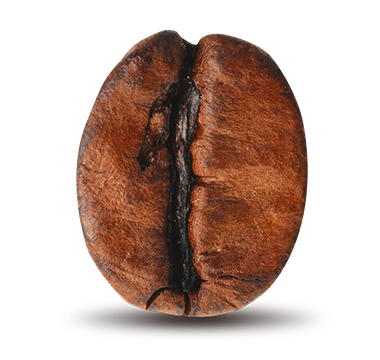It all started with a cup of Mocha
How or when coffee exactly began is a mystery, but we can be pretty sure that the bean was originally chewed before people instead began brewing it, with the first recorded coffee drinking occurring by 1400. To be more precise, Yemen was the hotspot for coffee drinking at the time, with Mocha being the coffee capital and main -producer. There, it was often enjoyed in coffee houses (qahveh khaneh), during long religious rituals or simply in one’s home. Does that word, qahveh, sound familiar? It was derived from the Arabian word qahwa, meaning coffee, and would soon spread along with the drink’s reputation. What happened next depends on whom you ask - much like after a good night out. Some would say the qahwa became the ottoman Kahveh, which in turn became the Dutch Koffie and finally the universally understood coffee. Others say it went from Arabia to Italy via Venetian traders, initially as Caveé before turning into Caffè and then coffee.
But everyone wasn’t so keen on this energizing wine of Araby. One of the earliest attempts at banning coffee was made in Mecca, where a young governor feared the act of drinking coffee would stimulate radical thinking and socializing, a combination that could unite the governor’s opposition. He might not have been far off though, as it is often said that the French revolution was planned in coffee houses. The ban was soon lifted, however, as the local populace and authorities had grown too fond of
their coffee.
Coffee faced some rough opposition in Italy as well. In the beginning of the 1600s, high ranking clergy members and some of the pope’s own advisors were urging to ban this “bitter invention of Satan” that was so popular among Muslims. After his first taste, Clement VIII (allegedly) said,
“This Satan’s drink is so delicious that it would be a pity to let the infidels have exclusive use of it”,
and so coffee gained a papal blessing of sorts, stopping this ban attempt.
From a well-guarded secret
to the second largest export worldwide
The Yemeni were, understandably, protective of their lucrative secret, and all beans for export had to be -processed and sterilized either by boiling or partial roasting. Smugglers eventually did manage to bring the sought-after plant to other continents, of course, with the Indian region of Mysore being viewed as the first coffee-growing region outside of Africa or the Arabian -Peninsula. The Dutch would soon follow suit and have their very own large-scale plantations on the island of Java (ever had a cup of Java?).
The French King Louis XIV received coffee plants as a gift from the mayor of Amsterdam in the 1710s, a gift that would lead to the distribution of the coffee plant to the Americas a few years later. How exactly it happened is being fought over, but according to the exporter himself,
a young naval officer by the name of Gabriel de Clieu,
it was far from a smooth sail. In his version of the story, the king refused to let de Clieu have seedlings from the king’s precious coffee plants, but de Clieu was adamant and managed to steal a plant from the king’s garden.
The voyage to the French colonies challenged de Clieu and his coffee plant with horrible weather, sabotage attempts, a pirate attack and water rationing that led de Clieu to share his water ration with the plant. If his account is to be believed, both he and the plant seem to have had the devil’s own luck, so perhaps the clergy in the 1600s were on to something. Nevertheless, the plant thrived in the Caribbean colony of Martinique and, in less than half a century, multiplied to a total of over 18 million coffee trees on Martinique alone, making the Martinique tree the parent of almost all the coffee trees throughout the Caribbean, Central America, and South America.
The coffee’s introduction to Brazil is said to have come through a Brazilian military man sent to French -Guiana in 1727. The French were unwilling to share their -precious plants at first, and it seemed as if the Brazilian -military man would have to return empty-handed, but the -governor’s wife was so captivated by the Brazilian’s looks that she gave him a large bouquet of flowers before he left. As you might imagine, that bouquet contained more plants than simple flowers, and Brazil’s coffee dominance could now take their first stumbling steps before becoming the world’s largest producer of coffee in 1850, a title they’ve held onto ever since.


